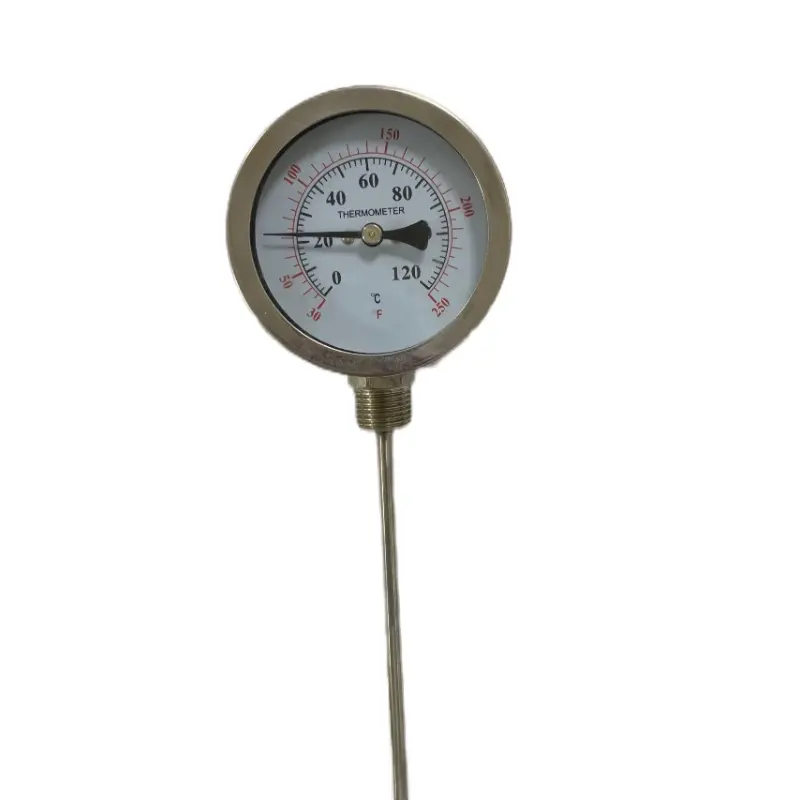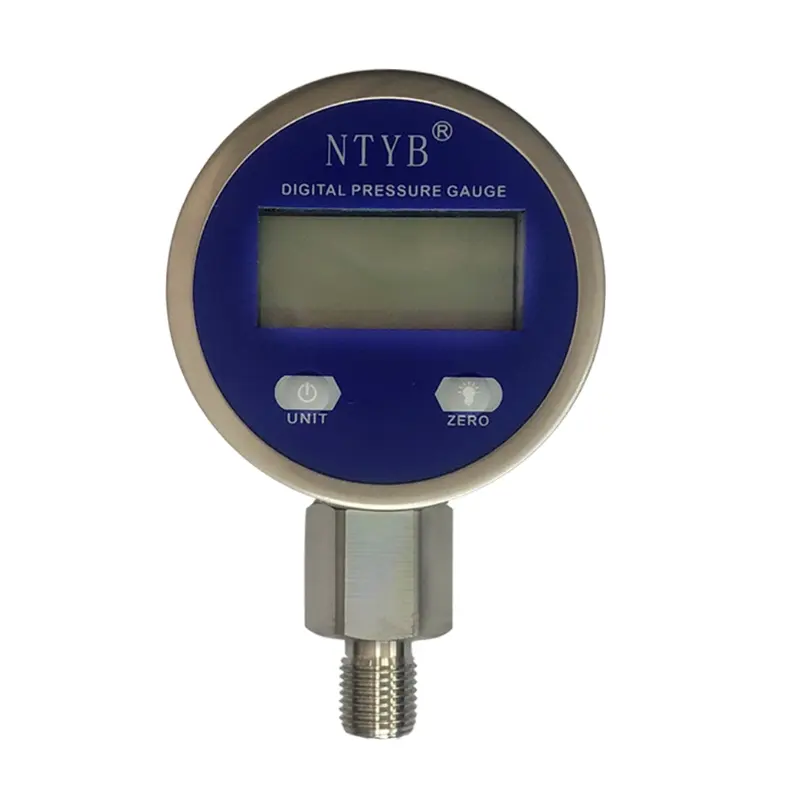Liquid Filled and Non Liquid Filled Pressure Gauges Differences
Release time: 2025-07-10
Pressure gauges are widely used instruments and equipment in the industrial field, and they are indispensable in almost every production process. According to the design and function, pressure gauges can be divided into liquid filled pressure gauges and non liquid filled pressure gauges. Today, Maanshan Naite Instruments will take you to analyze the difference between these two pressure gauges in depth to help you make a better choice.
What is a liquid filled pressure gauge?
As the name suggests, a liquid-filled pressure gauge refers to a pressure gauge in which the movement part is filled with liquid. This liquid is usually glycerin, silicone oil or other sealing oil. The role of the liquid is to improve the stability of the pressure gauge, reduce the wear of mechanical parts, and prevent inaccurate readings caused by vibration.
Liquid-filled pressure gauges are often used in high-vibration environments or in situations where the pressure value needs to be displayed stably for a long time.
What is a non liquid filled pressure gauge?
Non-liquid-filled pressure gauges are not filled with liquid. Usually, their movement is made of metal materials, and the pressure is indicated by the changes in mechanical parts. This type of pressure gauge is common in low-vibration environments with relatively stable pressure changes.
Comparative analysis of liquid-filled pressure gauges and non-liquid-filled pressure gauges
| Features | Industrial liquid filled pressure gauge | Non liquid filled pressure gauge |
| Structure | Internally filled with liquid, commonly glycerin, silicone oil, etc. | Only metal mechanical parts, no liquid filling inside |
| Vibration resistance | Excellent, can effectively reduce the impact of vibration on pressure readings | Poor, easily affected by vibration and causing unstable readings |
| Stability | High, suitable for long-term stable use | Low, greatly affected by the external environment |
| Usage environment | Suitable for use in environments with large vibrations or harsh environments | Suitable for environments with stable pressure changes and no excessive vibration |
| Maintenance requirements | Regularly check whether the liquid is leaking or deteriorating | Maintenance is relatively simple, no need to worry about liquid leakage |
| Accuracy | High, liquid filling can reduce errors | Low, mechanical parts may affect accuracy due to wear |
| Cost | Relatively high | Relatively low |
| Applicable industries | High-requirement industries such as petroleum, chemical, electric power, and machinery manufacturing | Low-requirement industries such as light industry, home appliances, and HVAC |
Advantages of liquid filled pressure gauges
Strong anti-seismic performance: Liquid filling can effectively reduce shock, suitable for high-vibration environments, and ensure the accuracy of pressure readings.
Strong corrosion resistance: Liquid-filled pressure gauges can still maintain good performance in harsh environments, and are suitable for use in chemical, petroleum and other industries.
Extended service life: Liquid filling can reduce mechanical wear and extend the service life of the pressure gauge.
Advantages of non liquid filled pressure gauges
Easy maintenance: There is no liquid filling, the structure is simple, and maintenance is more convenient.
Low cost: Since there is no liquid filling, the manufacturing cost is low, which is suitable for projects with limited budgets.
Wide range of application: Suitable for environments with small pressure changes and less vibration, such as the home appliance industry or some occasions that do not require high precision.
How to choose a suitable pressure gauge?
Working environment: If your working environment is full of vibration or the temperature difference is large, it is recommended to choose a shock-resistant liquid filled pressure gauge, which can ensure the accuracy and stability of the pressure reading.
Budget considerations: If the budget is limited and the use environment is relatively stable, you can choose a non-liquid-filled pressure gauge.
Usage requirements: For occasions requiring high accuracy and long-term stable operation, liquid-filled pressure gauges are undoubtedly the best choice; for some occasions with lower accuracy requirements, non-liquid-filled pressure gauges can also meet basic needs.
Conclusion
When choosing a pressure gauge, you should not only consider the type of pressure gauge, but also judge it according to the actual application scenario. Liquid-filled pressure gauges and non-liquid-filled pressure gauges each have their own advantages and disadvantages. Understanding their differences can help you make a more scientific and reasonable choice. When choosing, the most important thing is to judge according to your actual needs, not just cost as the only determining factor.
If you are still hesitating about which pressure gauge to choose, please feel free to contact Naite Instrument, we will provide you with professional advice and solutions.


